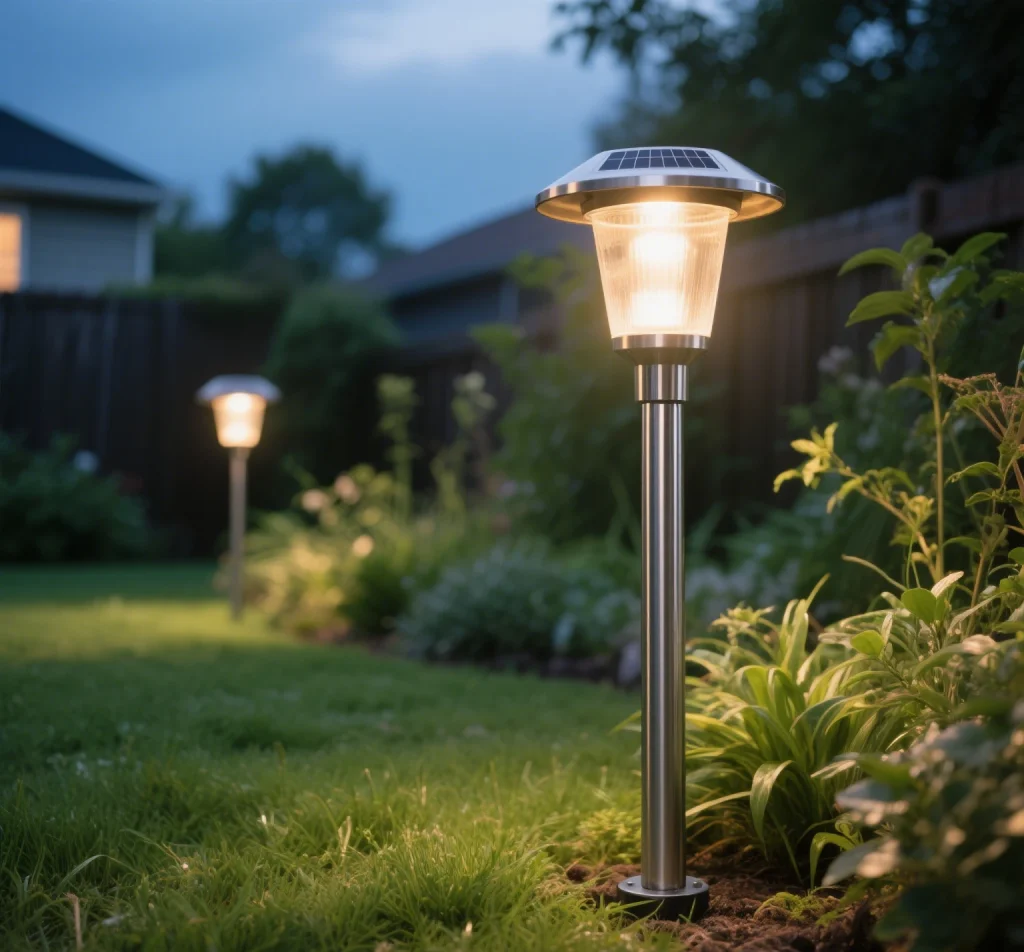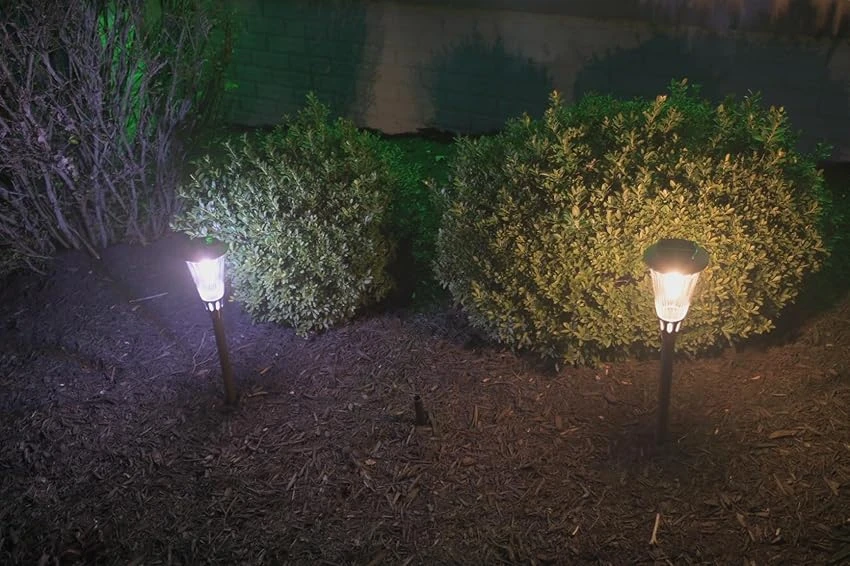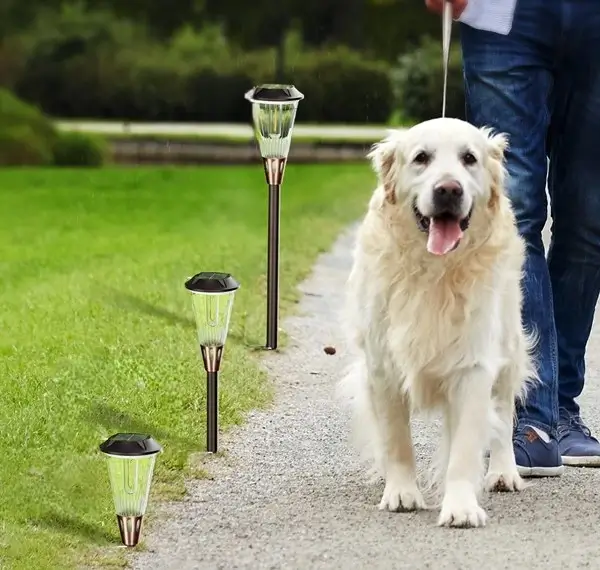Garden lights transform outdoor spaces, enhancing aesthetics, safety, and functionality. However, their lifespan varies significantly based on several factors, including material quality, environmental conditions, maintenance practices, and technological design. Understanding these influences helps homeowners and designers make informed choices, ensuring long-lasting, cost-effective lighting solutions. Bitpott will use this article to explore the key factors that affect the life of the garden light.

1. Material Quality: The Foundation of Durability
The materials used in garden lights play a pivotal role in determining their longevity. High-quality components resist corrosion, wear, and environmental stress, while subpar materials degrade quickly.
- Housing Materials: Stainless steel or powder-coated aluminum, as seen in brands like Philips Hue, withstands rust and UV exposure better than plastic. For instance, John’s coastal garden in California uses stainless steel solar lights, which have lasted over 8 years despite salty air, compared to plastic models that failed within 2 years.
- Lens Quality: Polycarbonate or tempered glass lenses, like those in Kichler’s LED garden lights, resist yellowing and cracking. Sarah, a homeowner in Arizona, replaced cheap acrylic-lensed lights after 18 months due to UV-induced brittleness, while her tempered glass lights have endured 5 years.
- Internal Components: Premium LEDs and circuitry, such as Cree LEDs, maintain performance over 50,000 hours. In contrast, budget LEDs in Emma’s backyard lights dimmed after 10,000 hours, reducing their effective lifespan.
Investing in high-quality materials ensures garden lights endure harsh conditions, delivering long-term value.
2. Environmental Conditions: Weathering the Elements
Garden lights are exposed to diverse environmental factors, from rain and humidity to extreme temperatures and UV radiation, all of which impact lifespan.
- Moisture and Corrosion: In humid regions like Florida, Michael’s IP65-rated solar lights have lasted 6 years, while non-waterproof models rusted within a year. Proper sealing and IP ratings (Ingress Protection) are critical for moisture resistance.
- Temperature Extremes: In Minnesota, Olivia’s LED garden lights, designed for -20°C to 40°C, function reliably through freezing winters, unlike budget models that cracked in subzero conditions. Heat also affects battery life in solar lights; high temperatures in Texas reduced David’s lithium-ion battery lifespan by 30%.
- UV Exposure: Prolonged sunlight degrades plastic components. In Australia, Sophie’s UV-resistant polycarbonate lights maintained clarity for 7 years, while standard plastic lights yellowed within 3 years.
Choosing lights with robust environmental ratings mitigates these risks, extending operational life.
3. Maintenance Practices: Prolonging Performance
Regular maintenance significantly enhances garden light lifespan. Neglect, such as ignoring dirt buildup or battery replacement, accelerates wear.
- Cleaning: Dust and debris on lenses reduce light output and cause overheating. In Georgia, Liam cleans his solar panels monthly, maintaining 95% efficiency after 5 years, while his neighbor’s uncleaned lights lost 40% brightness.
- Battery Care: Solar garden lights rely on rechargeable batteries. Replacing batteries every 2–3 years, as Anna does in Oregon, ensures consistent performance. Neglecting this, her friend Tom’s lights failed after 2 years due to battery degradation.
- Wiring Checks: For wired lights, inspecting connections prevents corrosion-related failures. In the UK, Rachel’s electrician annually checks her low-voltage system, extending its life beyond 10 years.
Simple maintenance routines preserve functionality and prevent premature replacement.
4. Technological Design: Efficiency Meets Longevity
The design and technology behind garden lights influence their durability and performance. Advanced features like smart controls and energy-efficient components extend lifespan.
- LED Technology: LEDs last 25,000–50,000 hours compared to incandescent bulbs’ 1,000 hours. In Canada, Ethan’s LED pathway lights have operated for 8 years, while his old halogen lights burned out annually.
- Smart Features: Motion sensors and dimming, as in Ring’s smart garden lights, reduce energy consumption, prolonging component life. In Colorado, Mia’s sensor-equipped lights last 20% longer than always-on models.
- Solar Panel Efficiency: High-efficiency monocrystalline panels, like those in Goal Zero’s lights, maintain charge even in low light. In Seattle, Noah’s monocrystalline solar lights outperformed polycrystalline models, lasting 7 years versus 4.
Innovative designs optimize energy use and component durability, maximizing lifespan.

5. Installation Quality: Setting the Stage for Success
Proper installation ensures garden lights perform optimally and resist environmental stress. Poor installation can lead to premature failure.
- Stable Mounting: Securely anchored lights resist wind and vibrations. In Kansas, Lucas’s poorly mounted lights toppled during storms, while his professionally installed bollard lights have stood firm for 6 years.
- Wiring Protection: Buried or conduit-protected wiring prevents damage. In New York, Emily’s exposed wires shorted after a year, but her conduit-installed system has lasted 9 years.
- Solar Panel Placement: Solar lights need unobstructed sunlight. In Japan, Hiroshi’s shaded panels underperformed, failing after 2 years, while his relocated panels have powered lights for 5 years.
Professional or careful DIY installation enhances stability and longevity.
6. Usage Patterns: Balancing Functionality and Wear
How garden lights are used affects their lifespan. Overuse or improper settings strain components, while balanced usage preserves them.
- Operating Hours: Lights left on 24/7 wear out faster. In Virginia, Chloe’s timer-controlled lights, on for 6 hours nightly, have lasted 7 years, while her always-on lights dimmed after 3 years.
- Brightness Settings: High-intensity settings drain batteries and LEDs faster. In Nevada, Ryan’s dimmable solar lights, set to 50% brightness, have outlasted full-brightness models by 2 years.
- Seasonal Adjustments: Adjusting settings for seasonal light changes, as Lily does in Sweden, prevents overcharging in summer or undercharging in winter, extending battery life.
Optimizing usage patterns reduces stress on components, enhancing durability.
Conclusion: Maximizing Garden Light Lifespan
The lifespan of garden lights hinges on a combination of material quality, environmental resilience, maintenance, technology, installation, and usage. By choosing durable materials, weather-resistant designs, and efficient technologies, homeowners can ensure their lights shine for years. Regular maintenance and proper installation further extend longevity, while mindful usage minimizes wear. Real-world examples, from John’s coastal stainless steel lights to Mia’s smart sensor models, illustrate how these factors translate into tangible results.
For optimal performance, select lights from reputable brands, prioritize IP-rated and UV-resistant models, and follow manufacturer maintenance guidelines. By addressing these factors, garden lights not only illuminate outdoor spaces but also deliver lasting value, sustainability, and beauty.


Leave a Reply